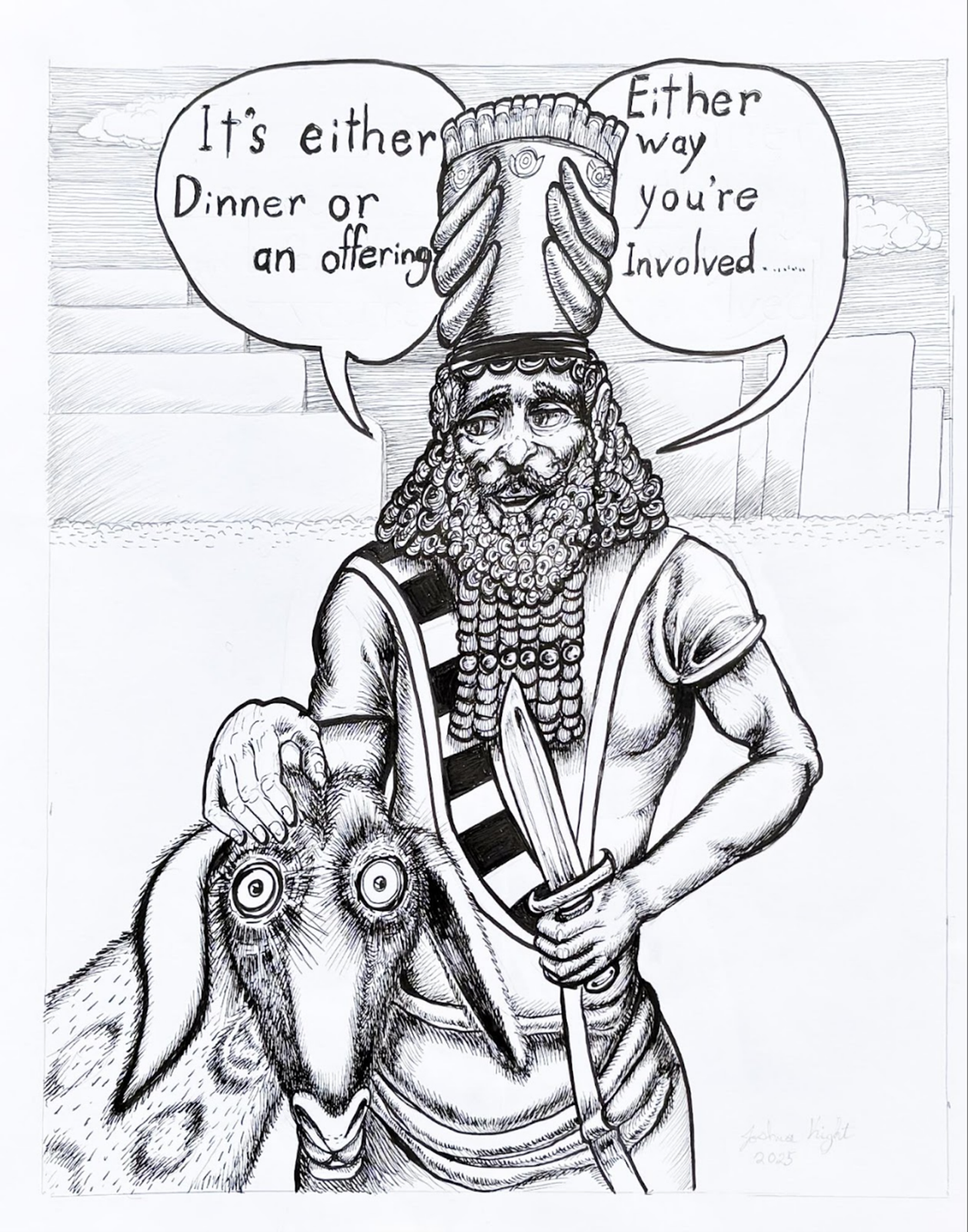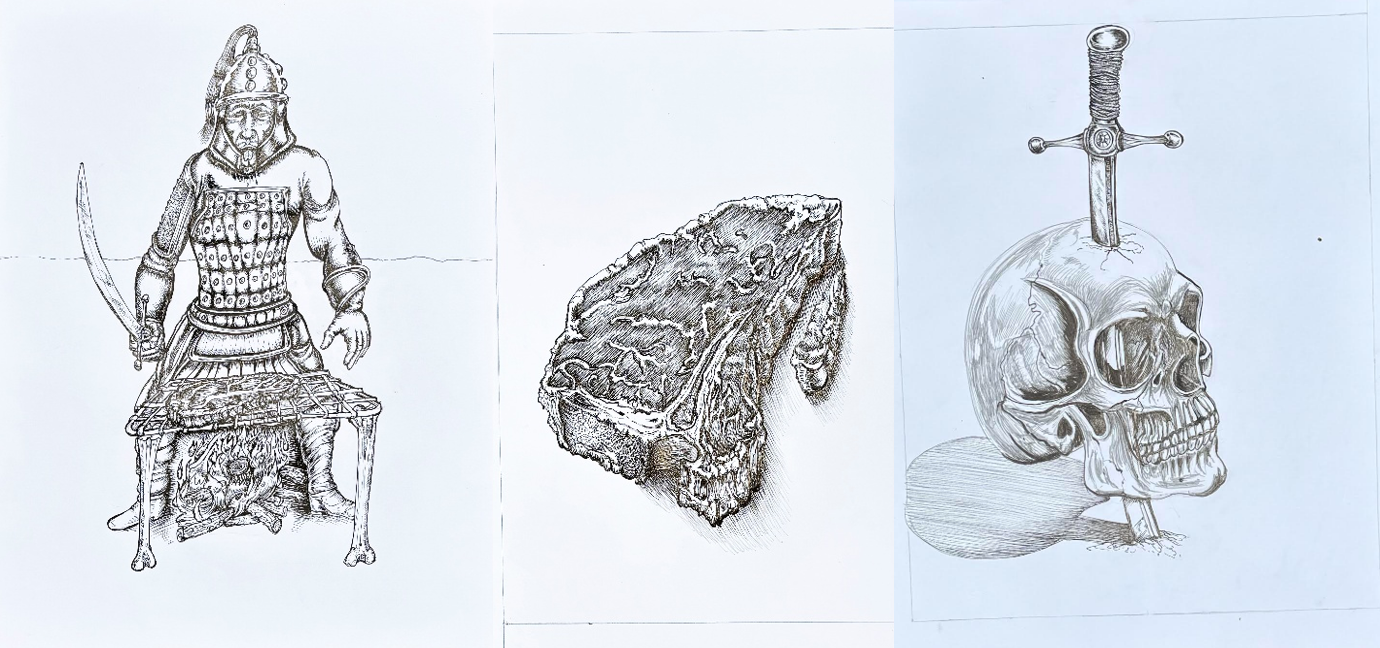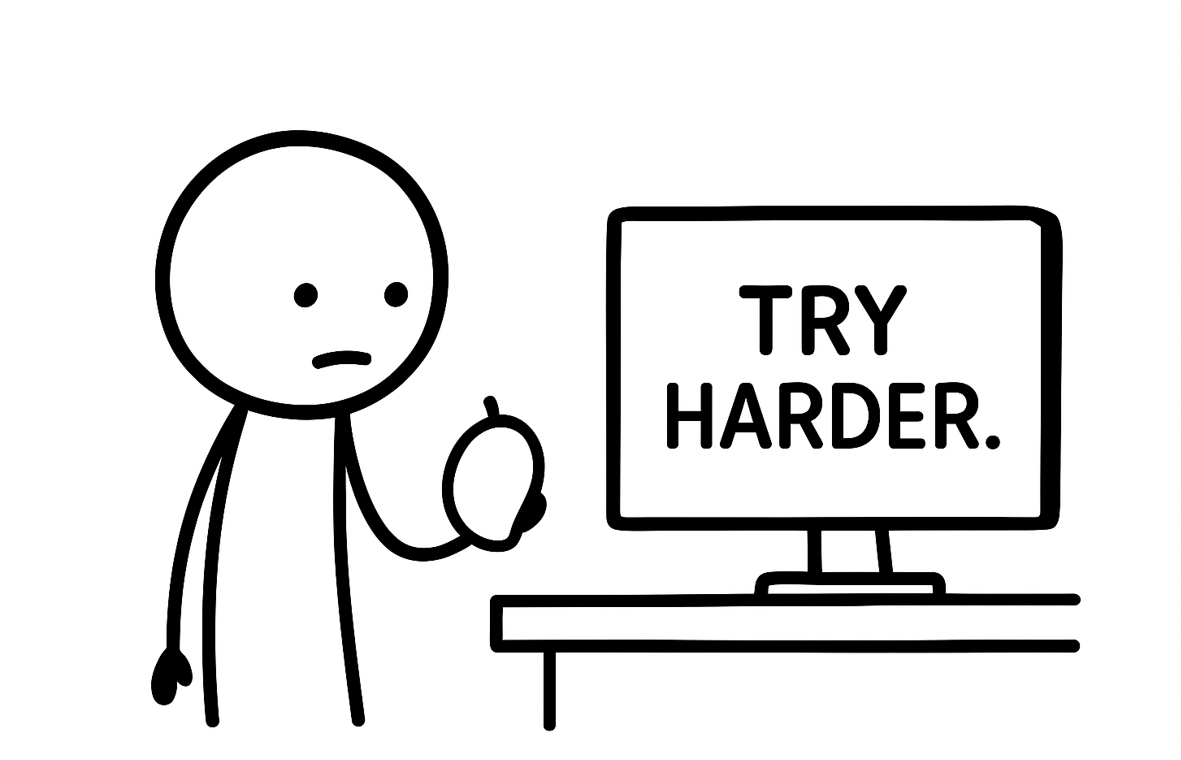The History of Knives: From Tomato-Smashing Cavemen to Your $300 Chef’s Knife
Part 1: Cavemen and the Great Tomato Crisis
Before knives, there were just rocks. And not even cool, sharp rocks. Just dumb, round ones.
Imagine it’s 100,000 BC. You’re a hunter-gatherer with a tomato. And you want to slice it. Except slicing doesn’t exist yet, so you just smash it with a rock and call it "food." Your mouth fills with pulp and shame.
And so, with tomato carnage fresh in their minds, early humans began sharpening rocks. Thus, the knife was born. Not for cooking shows, not for late-night infomercials, but because Neolithic man was tired of food fights with plants.
Part 2: Mesopotamia – Where Bureaucracy and Blade Met
Fast forward to around 3000 BC. Welcome to Mesopotamia, where humans invented writing, taxes, and the first known petty office politics. They also invented metal knives—bronze, to be specific—because stabbing people with stone was just so last millennium.
Knives in Mesopotamia were multipurpose: cut meat, harvest crops, sacrifice goats, sacrifice enemies, or occasionally open Amazon packages from the Sumerian gods.
Part 3: Greece and Rome - Stabbing, Philosophy, Repeat
The Greeks were thinkers. The Romans were doers. Both were stabbers.
Greeks used knives for ceremonies, cooking, and the occasional tragic play. Romans, on the other hand, turned knife usage into a full-time career path. If you didn’t get stabbed in Rome at least once in your life, were you even trying?
Fun Knife Fact: Julius Caesar was stabbed 23 times. Not one wound was instantly fatal. That’s just poor knife form.
If you look closely you can see my father and I murdering Ceasar! DOWN WITH THE EMPEROR!
Meanwhile, kitchen knives in Rome became more standardized. Rich Romans had specialized tools: fish knives, fruit knives, cheese knives, gluten-free knives (probably). This was proto-culinary snobbery.
Part 4: The Mongol Empire – Horseback Butchery 101
In the 13th century, the Mongol Empire basically took over everything. And wherever they went, they brought horses, fear, and really scary knives.
The Mongols weren’t into fancy cuisine, they were into eating meat fast and slicing things even faster. Their knives were utilitarian, compact, and perfect for butchering both livestock and enemies. Usually in that order. Until as we all know, the Mongol empire fell in 1453. Same year as Constantinople was conquered by the Ottoman Turks. This will be important for a trivia question one day.
Two for one
Part 5: The Middle Ages – A Knife at Every Table
In medieval Europe, knives became personal. Like, bring-your-own-knife-to-dinner personal. People wore them on belts, in boots, even tucked into hats like extremely dangerous fashion statements.
These knives weren’t just for eating—they were for self-defense, personal grooming, and, if needed, passive-aggressively carving your neighbor’s name into your wooden mug when they took your mutton.
I call this one Dumbass Peasant. The Artist (my father) has a different name for it.
Part 6: The Renaissance – Art, Science, and Knives You Could Paint
Renaissance thinkers invented science, perspective, and repressed Catholic guilt. Knife-makers in Italy and Germany took metallurgy to the next level.
Knives became Sexy, nobles could engrave their name on the handle and in return the knives would call them daddy. You were supposed to cut your prosciutto while contemplating geometry.
Meanwhile, German craftsmen in cities like Solingen began developing what would become the gold standard of Western kitchen knives. These were robust, thick-bladed, heavy-duty cleavers designed to make you feel powerful while mincing garlic.
Part 7: Feudal Japan – The Knife Becomes Sacred
While Europe was inventing the printing press and colonialism, Japan was creating the samurai sword’s delicate cousin… the Japanese kitchen knife.
Japanese blades evolved from sword smithing traditions, resulting in knives so sharp they could cut your soul. The most iconic is the gyuto, basically Japan’s answer to the Western chef’s knife: lighter, thinner, and more emotionally intelligent.
I don’t know what that food is on the table but I’m not eating it.
Part 8: WWI & WWII – Knives Go to War
In the 20th century, knives once again returned to their battlefield roots. Trench knives in WWI had brass knuckles attached. WWII soldiers carried combat knives like the Ka-Bar, which sounds like a protein bar but is actually for slashing throats.
Civilians back home used knives too—canning, cooking, ration-slicing. It was the era of the utility blade, both literally and metaphorically.
For Liberty!! or For Liberty Toast!
Part 9: The Cold War – Spy Knives and CIA Shenanigans
If you’ve ever dreamed of a knife that was also a pen, also a microphone, also a tiny missile launcher—welcome to the Cold War.
Knives were used by spies, cosmonauts, and paranoid governments. It was like Q from James Bond met a pocketknife and said, “Let’s get weird.”
Fun Fact: The CIA developed a knife disguised as a rectal tool. Just let that sink in. We didn’t make a comic for this one… You’re Welcome.
Part 10: Today – A Knife for Every Personality Disorder
Welcome to 2025, where your choice of kitchen knife says more about you than your therapist ever could.
German knives (like Wüsthof or Zwilling): Thick spines, full tang, great for brute-force chopping and feeling superior.
My image quality isn’t bad it’s your phone! (it’s me)
Japanese knives (like Shun or MAC): Razor-thin, delicate, and will disown you if you try to cut a frozen burrito.
Mac is what the most chefs ask for and also what I got my mother for Christmas.
TANGENT
Everyone today wants the perfect knife—carbon steel, Damascus pattern, ergonomic handle made from the tears of Scandinavian elves. For that reason, the Cangshan 8in Kita is our best selling knife. Do you know how hard it is to make a Scandinavian Elf cry? Really hard. And they aren’t even native to Round Rock where the knives are distributed from. Which means they have to pay for shipping on the elf tears. The Knife even comes with a magnetic cover. I hide my 8in Kita from my girlfriend because she doesn’t like me looking at sexy things in front of her. I realize globalization has made everything cheaper, but sometimes you can’t put a price on quality. Except in this situation…its $130. I don’t really do this blog to sell stuff, but you should buy this knife. Reach out and tell us you found out about the knife on the blog and you can have it for $100. Olivia said offer whatever you want, no one reads to the end of the blog but what does she know. She doesn’t understand artists like me. IM JUST A TEENAGE DIRT BAG BABYYYYYY
Here is the knife:
Alright where was I…
Ah yes, the truth is: they all cut things. But deep down, we’re still cavemen smashing tomatoes, just with fancier rocks.
Final Thoughts: A Blade Through Time
Knives have carved the story of humanity. Through mammoths, empires, marriages, and melons. Whether ceremonial or culinary, sacred or stabby, they’re one of the few tools that never got replaced.
Because no matter how advanced we get, you still can’t peel a mango with AI.
One of these comics was made by me and not my father…could be any of them
Writers note:
You may notice all of the comics look like they were penned by Apollo himself. This is not the case, in fact they were done by a mere mortal. Joshua Kight is an Austin based artist. He works in mixed media: paintings that have the sculptural texture of 3D and his colors punch you before you’ve finished reading the frame. He often merges figure drawing and raw emotional content, combining the cerebral with the visceral. His work isn’t just something to see; it’s something that stirs up something inside: Beautiful, edgy, and undeniably alive. He is also the father of a knife sharpener based in Dallas, TX.












